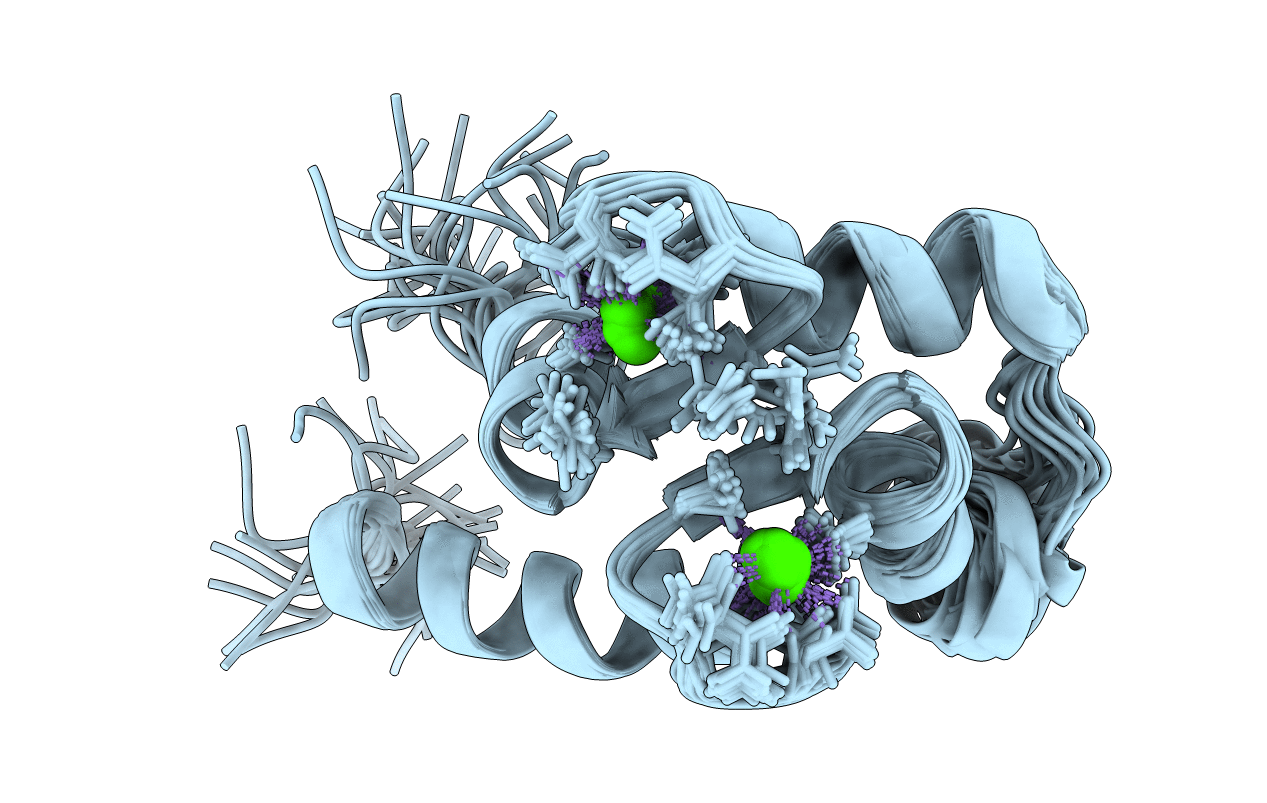
Deposition Date
2000-06-13
Release Date
2003-07-15
Last Version Date
2024-05-22
Entry Detail
PDB ID:
1F55
Keywords:
Title:
SOLUTION STRUCTURE OF THE CALCIUM BOUND N-TERMINAL DOMAIN OF YEAST CALMODULIN
Biological Source:
Source Organism:
Saccharomyces cerevisiae (Taxon ID: 4932)
Host Organism:
Method Details:
Experimental Method:
Conformers Calculated:
200
Conformers Submitted:
30
Selection Criteria:
structures with the lowest energy


